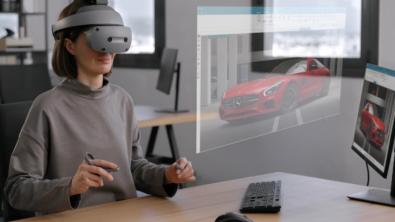How circularity turns waste into opportunity

Each year, the Earth yields billions of tons of natural resources to support global demand, and each year, much of that material ends up as waste. With global resource use expected to more than double by 2050, the challenge for industries extends beyond reducing consumption. It also involves rethinking how materials are used, reused and ultimately, how waste can be avoided altogether. Circularity provides a path forward.
By moving away from the traditional linear “take, make, waste” model and embracing circular economic principles, companies can keep materials in use for longer. This approach drives efficiency, minimizes waste and helps uncover new business value. Circularity encourages organizations to design with end-of-life in mind, considering how materials are sourced, used, recovered and reintegrated into new production cycles.
Why circularity matters
Circularity encompasses a range of strategies, often referred to as “R-strategies,” including reuse, refurbishment, remanufacturing and recycling. Recycling, while critical, is only one part of the larger picture. Products must be designed from the outset to enable easier disassembly, repair and reprocessing. This includes using durable and recyclable materials and implementing modular designs that extend product life and reduce waste.
Supply chains must also evolve to support this model. Closed-loop systems and reverse logistics enable manufacturers to reclaim products at the end of their life and redirect valuable components back into production. Reverse logistics, in particular, helps recover damaged or obsolete inventory, enabling repair, repurposing, or safe disposal, which significantly reduces overall product waste.
The cost of inefficient waste disposal could exceed $640 billion annually by 2050. However, with the right circular strategies in place, companies have the potential to unlock $4.5 trillion in economic value by 2030. Rather than viewing waste as a liability, industries can treat it as a design flaw and an opportunity to innovate.
Circular innovation in action
A shift toward circularity is already reshaping sectors such as energy storage and plastics. For instance, the lithium-ion battery industry is poised for significant growth, with demand expected to rise over 30 percent annually through 2030. To meet this demand sustainably, companies are turning to smarter, more transparent recycling systems.
Digital tools like battery and product passports are emerging as key enablers. These passports provide detailed records about material composition, origin and usage history, making it easier to assess product health and guide reuse or recycling decisions. They help keep valuable resources in circulation for longer while increasing transparency and efficiency across the value chain.
Digitalization is often the first step. By combining real and digital operations, companies can make data-driven decisions that support both profitability and sustainability. This transformation enables smarter design, greater energy efficiency, and systems built for reintegration. Closing the loop on materials lays the foundation for truly sustainable industrial operations.
Keeping materials in use with Siemens
Siemens works with companies across industries to operationalize circularity. By leveraging automation, digitalization and financing solutions, Siemens supports customers in extending the life of materials and optimizing resource use.
1. Plastic Energy: From Plastic to Fuel
Plastic Energy uses chemical recycling to convert hard-to-recycle plastics into TACOIL, a sustainable feedstock for new plastics. To stabilize and streamline these complex processes, the company depends on Siemens’ intelligent automation and predictive analytics. These tools help ensure plant reliability, anticipate disruptions and scale sustainable production.
2. Pyrum Innovations: Circularity for Tires
German company Pyrum Innovations AG specializes in recycling end-of-life tires. Using a patented thermolysis process, Pyrum breaks down rubber into solid, liquid, and gaseous materials. Siemens supports the entire automation process, from control systems to measurement instrumentation, allowing Pyrum to operate a self-sufficient, CO2-neutral facility where the recycled gas fuels ongoing operations.
3. PlantSwitch: Replacing Plastics with Plants
North Carolina-based PlantSwitch creates biodegradable plastic alternatives from agricultural waste. Their plant-based resin fully decomposes in under 12 months, leaving no microplastics behind. Siemens provides custom electrical systems and equipment financing through Siemens Financial Services, enabling PlantSwitch to grow their impact.
Advancing circularity at scale
Circularity is a business strategy. By designing for resource longevity and building smarter systems for reuse and recycling, companies can cut costs, meet regulatory expectations and unlock new sources of value. With Siemens’ technology and expertise, organizations across industries are demonstrating how circular thinking can lead to a more resilient, profitable and sustainable future.
Siemens Digital Industries Software helps organizations of all sizes digitally transform using software, hardware and services from the Siemens Xcelerator business platform. Siemens’ software and the comprehensive digital twin enable companies to optimize their design, engineering and manufacturing processes to turn today’s ideas into the sustainable products of the future. From chips to entire systems, from product to process, across all industries. Siemens Digital Industries Software – Accelerating transformation.


